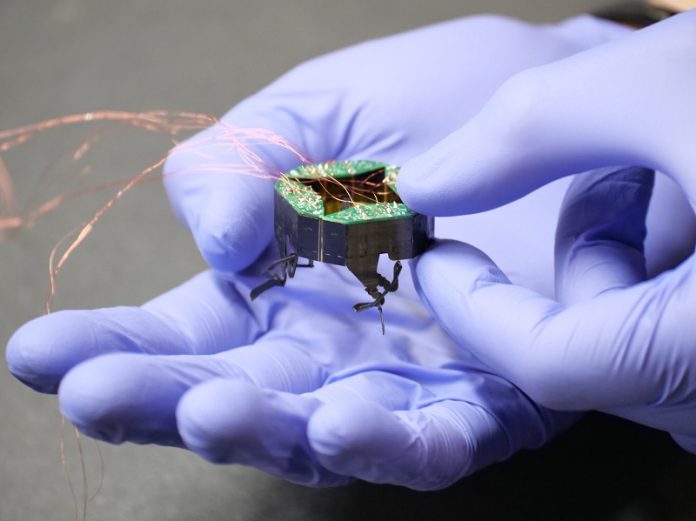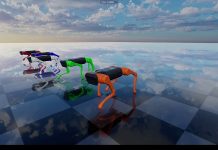
Have you ever watched a bug easily crawl through a tiny gap and wondered how it did that?
Well, scientists at the University of Colorado Boulder have been inspired by insects to create a small robot that can do the same thing.
They named it CLARI, which stands for Compliant Legged Articulated Robotic Insect.
CLARI is super small. Several of these robots can easily fit in your hand and they weigh less than a Ping Pong ball.
What makes CLARI special is its ability to change shape. It can go from being square-shaped to long and slender, letting it slip through tight spots just like bugs do.
This feature could make it very helpful in dangerous or tricky situations, like searching through rubble after a building falls down.
Right now, CLARI has four legs. But its design is so flexible that the engineers can easily add more legs if needed. Imagine a tiny robot spider walking on a web; that’s what the creators hope to achieve in the future.
One challenge, though, is that CLARI is still attached to wires. These wires give it power and help it receive simple commands.
The researchers want to improve it so that one day, CLARI can crawl around by itself, going into places like inside jet engines for inspections or other hard-to-reach places.
How does CLARI change its shape? Each leg on the robot is like its own mini-robot. It has a small computer board and tiny parts that allow it to move forward and backward and from side to side.
This ability to move its legs in different directions allows CLARI to change its shape when it needs to. In its square form, it’s about 1.3 inches wide, but it can slim down to 0.8 inches when it elongates.
The scientists see this as just the beginning. They have big plans for CLARI. They want to add sensors so that the robot can figure out how to move around obstacles by itself.
They’re also working on giving it the right amount of flexibility and strength. The more legs they add, the more challenging this becomes. But they’re excited about the possibilities.
In the future, they want these shape-changing robots to navigate not just in labs but also in natural, complex environments.
They could move through grass, rocks, or any other obstacles that come their way, exploring places that are difficult for humans or even larger robots to get to.
So, the next time you see a bug effortlessly crawl into a gap, think about CLARI. This tiny robot is setting the stage for some really big changes in how we explore and understand the world around us.
Follow us on Twitter for more articles about this topic.



